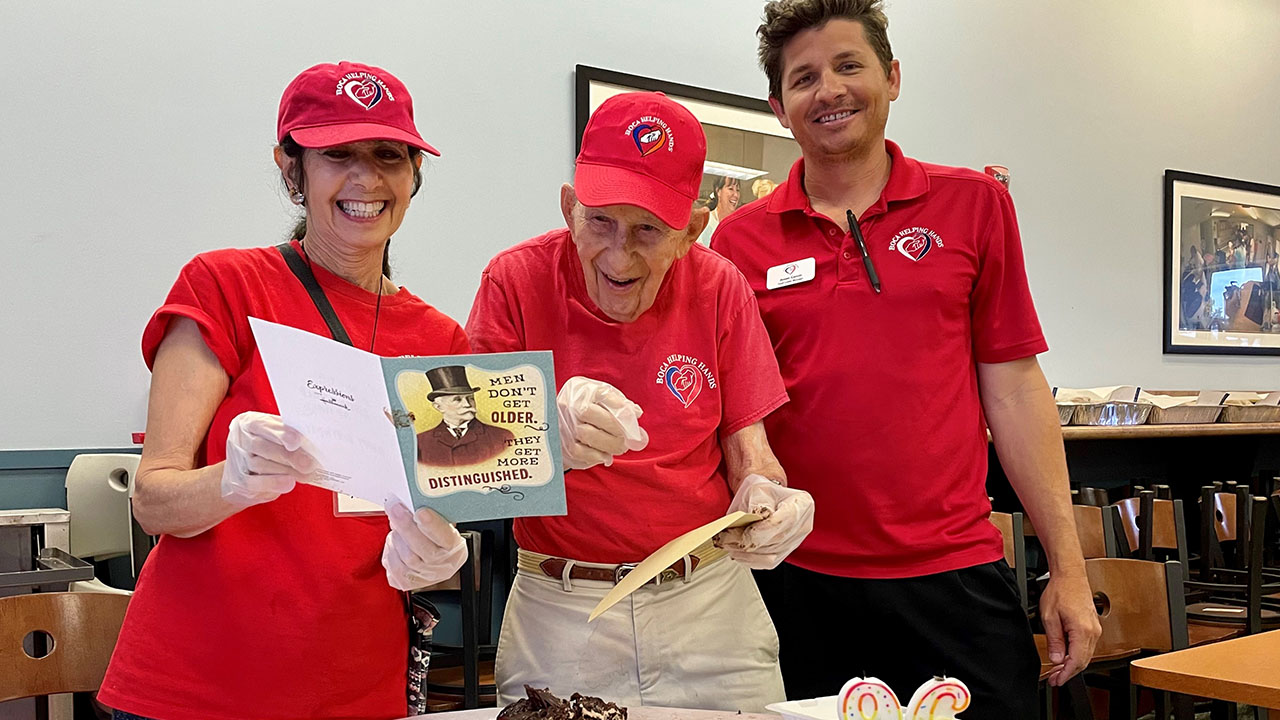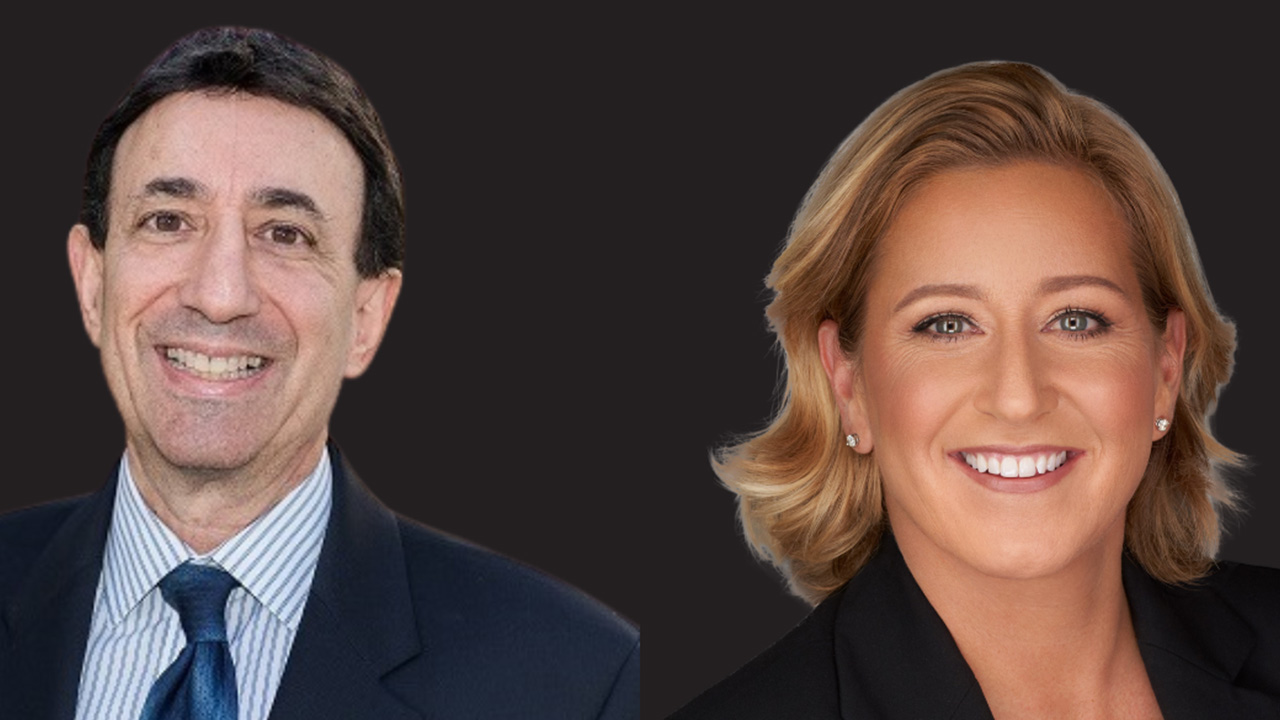Amid tough competition for borrowers, regulations cause concerns
By Kevin Gale
If your business is looking to borrow money, now is a good time, according to 16 South Florida bankers surveyed by SFBW.
Banks have recovered from the recession, and competition is fierce for quality borrowers, many of the bankers say. The number of community banks has shrunk dramatically, and bankers expect that trend to continue. Banks entering the region will continue to buy existing banks and some banks in the region are looking for acquisitions. And most say the regulatory environment is overly burdensome, particularly for community banks.
Here are highlights of the answers we received from the survey responses.
What is the general state of banks these days?
Mark W. Thompson, executive vice president and regional president at CenterState Bank: Banks are doing well. The economy is expanding and we are again seeing the net in-migration of people in Florida that serves as a tide to lift all boats. Add in the prospects for increasing interest rates and a willingness to look at common-sense regulatory adjustments for community banks in particular, and the trajectory looks to be on a continued path of expanding margins and growth in balance sheets.
Guillermo G. Castillo, managing director, South Florida region manager, JPMorgan Chase: Given the diversity in size of businesses in the market, South Florida is seen as a high-growth market for Chase, since we are a global firm and able to serve businesses of all sizes.
Keith Costello, president and CEO, First Green Bank: I would say that it’s the best it has been since before the Great Recession. While competition has become much more intense, the Florida banking market is extremely dependent on the real estate cycle. While there are pockets of excess, for the most part, the market is in good shape overall. As a result, banks’ problem loans are at the lowest in 10 years.
Angel Medina Jr., president and CEO, Gibraltar Private Bank and Trust: The industry continues to be challenged by decreasing margins, declining noninterest income opportunities and excessive regulation.
Al Peraza, executive VP and chief financial officer, Mercantil Commercebank: The industry took quite a bit of time to address the issues of the Great Recession, but the consequence has been a healthier banking system. Of course, ongoing historically low interest rates, coupled with growing regulatory burdens, have compressed profit margins. But, as a whole, we have great confidence in the industry.
Carlos R. Fernandez-Guzman, president and CEO, Pacific National Bank: Most banks have now fully recovered from the most recent financial crisis, but the challenge continues to be profitability. Interest margin compression due to low rates and the rising overhead due to excessive regulatory burden continue to negatively impact the bottom line.















Is your bank planning new branches?
Tony Coley, South Florida regional president, BB&T: South Florida is a significant growth market for BB&T, and we are always looking for ways to expand. Many common day-to-day banking needs are served through digital platforms and handled in a self-service manner. However, clients still want access to a banker when they need one, and those bankers are at branches. We have grown in South Florida through acquisition and our branch network is extremely important to our growth goals.
Thompson, CenterState: It is difficult to justify the costs of branch expansion on a de novo [newly created] basis. Most all of our branch expansion will come in the form of mergers and acquisitions.
Castillo, Chase: We plan to open 16 new branches in Florida this year and enter new markets in Ocala and Gainesville. We are continuing to look for opportunities to expand our presence in South Florida over the next two years.
Joseph B. “Jay” Shearouse III, president and CEO, First Bank of the Palm Beaches: Yes, in Wellington, with groundbreaking later this year.
Costello, First Green: Yes. We just purchased land on the south side of Davie Boulevard, just east of U.S. 1 in Fort Lauderdale, to build a South Florida headquarters, which will be about an 8,000- to 9,000-square-foot green structure that will be much more than a branch. It will house our South Florida team as well as serve as a hub for the community.
Medina, Gibraltar: Gibraltar Private will be relocating its South Miami relationship office to a new signature building in South Miami in 2018.
Rick Kuci, president and CEO, Grove Bank & Trust: Yes. Grove Bank & Trust is considering mergers and acquisitions as they become available, and de novo branches and loan production/wealth management offices in the tri-county area.
Peraza, Mercantil: We recently opened a new banking center in Pembroke Pines to serve our growing customer base in Broward County. Our near-term plans include new banking centers in Coral Springs and Katy, Texas. The bank also looks for opportunities to upgrade our current facilities based on the needs of our growing customer base. Included in those upgrades is the relocation of two current banking centers (Biscayne and Lantana).
A. Alfonso Macedo, president and CEO, Ocean Bank: We recently relocated our branches in Pinecrest and Weston to upgraded locations.
Abel Iglesias, president and CEO, Professional Bank: We expanded our footprint into Palm Beach County at the end of last year. We opened a loan production office in Palm Beach Gardens that will transition to a full-service branch on PGA Boulevard later this summer. Earlier this year, we opened an LPO in Boca Raton and are actively looking at additional LPO opportunities in the tri-county region.
Pablo Pino, South Florida commercial market president, TD Bank: Selectively in certain metro markets. In general, the new stores are smaller and at times co-branded with TD Ameritrade.
What innovations and technology are you using to grow?
Thompson, CenterState: Advanced ATMs that allow for multipurpose usage together with the ability to interact with a human via video conference is the future we are just beginning to see.
Castillo, Chase: We are upgrading our ATMs to perform even more self-service transactions. You can also take out cash in multiple denominations at more than 3,000 of our new ATMs. Pretty soon, you won’t even need a card to use the ATM. All you’ll need is a one-time passcode through our mobile app.
Costello, First Green: The discussion about blockchain, bitcoin and distributed ledger are the next big thing, and it’s probably not that far off.
Peraza, Mercantil: We upgraded our mobile banking platform with features that offer our customers a convenient, easy and more secure way of banking. Some of the new features include mobile check deposit, Touch ID fingerprint sensor technology and Apple Watch functionality.
Luis de la Aguilera, president and CEO, U.S. Century Bank: Internally, we are migrating the bank to a paperless platform, and we have invested in data analytics technology, significantly improving our speed, access and management of data. We are also reaching beyond our geographies because of our electronic and remote banking capabilities. For example, homeowners associations in Palm Beach, a market where we have not invested in brick and mortar, are now part of our portfolio.
Can we expect more consolidation among community banks?
Thompson, CenterState: Consolidation will continue, as it is too hard for small banks to make the economics work from a regulatory compliance point. Also, many banks that weathered the Great Recession are now tired of continuing to try and push the rock up the hill. Given the recovery in stock values, there is a better opportunity to sell.
Costello, First Green: Yes! We have gone from over 300 banks headquartered in Florida pre-crash to less than 130 today.
Veronica Birch Flores, executive vice president, First National Bank of South Miami: Sadly, I think that is the reality of our times. It is difficult to keep up with the increasing regulatory burden. In addition, the return on equity is just not there. In 1996, there were more than 12,000 community banks and, today, there are just over 5,000.
Medina, Gibraltar: While technology has become more affordable, it has not offset the sharp rise in the cost of doing business for community banks in general and therefore consolidation will continue as a way to address shareholder expectations of profitability.
Pino, TD Bank: Most likely. As larger or international banks want to get into the Florida banking sector, smaller banks will be a target.
Can we expect more new community banks in the future, or has that era passed?
Thompson, CenterState: Hard to say, but until the [merger and acquisition] opportunities dry up, it is economically more feasible to buy an existing bank, bring in new capital and try to grow an already-established base than to tie up the necessary capital it takes to de novo a new bank and wait the six to seven years or more it might take to grow sufficiently to allow for a return on capital that makes sense.
Shearouse, FB Palm Beaches: Yes, but slowly. As of the end of last year, only two banks in the country have filed for a new charter in the last seven years nationwide, as compared to more than 100 new charters per year in the mid-2000s
Costello, First Green: I recently was asked by FDIC Chairman Martin J. Gruenberg to serve on a de novo bank panel put together to encourage new bank formation. The problems go beyond regulatory and are more economic. Still, I believe that there will be new banks formed as creative solutions are found to compensate for the large initial capital requirements in the first three years.
Medina, Gibraltar: As consolidation continues and local banks are acquired by out-of-state and even out-of-country institutions, we will see opportunities for new entrants if the remaining community banks are not sufficiently proactive and responsive to the local community needs.
Kuci, Grove: Yes, I expect there to be new community banks established on a limited basis. There have been new application requests filed with the South Florida Federal Reserve.
Javier Holtz, chairman and CEO, Marquis Bank: There are some new bank formations taking place now, but they will certainly not keep up with the pace of consolidation.
Peraza, Mercantil: The industry is hopeful that the regulatory bodies will somewhat ease the barriers that have led to few new banking charters being granted in recent years.
Fernandez-Guzman, Pacific National: Should the regulatory pendulum swing back to a more-reasonable standard for regulatory compliance, and the economy continues its rebound, you will see new entries.
Iglesias, Professional: I believe applications for new community bank charters will remain low, so long as the regulatory and compliance burden remains as high as it has been these past several years. The cost of complying with the financial reforms enacted under the Dodd-Frank Wall Street Reform and Consumer Protection Act and the previous Patriot Act, coupled with the protracted low-rate environment, has soured investors on new community banks.
De la Aguilera, U.S. Century: Absolutely not. Community banks—generally defined as institutions between $100 million to $10 billion—make up more than 90 percent of the banks in the country. Still, the five largest banks in the country control over 50 percent of the industry’s total assets. So while the traditional size of community banks has increased over time, their importance has not diminished.
How is the environment for business lending?
Eddy Arriola, chairman and CEO, Apollo Bank: This is a very good time for business lending. Lowered interest rates have led to a spike in loan applications, especially among small businesses and entrepreneurs, and banks are actively lending again. At Apollo Bank, we are seeing that our small-business clients are largely optimistic about their ability to grow business and raise revenue in the year ahead.
Coley, BB&T: We believe what’s getting ready to happen is a substantial resurgence of Main Street. These folks have been holding back on investments and equipment—computers, trucks and cars, etc. We are getting really, really good feedback from our client contact people that this is changing. In fact, a recent survey on small business optimism says it’s at a 12-year high.
Castillo, Chase: Loan demand is good and we think it will get better as the economy picks up more traction in the next year or two. That said, it is a borrower’s market—heavy competition for quality companies exists among banks in South Florida.
Shearouse, FB Palm Beaches: Fairly strong and active. Businesses, however, seem less motivated to leverage their growth with debt than they did in 2005.
Costello, First Green: We have experienced strong loan growth, although I think that has more to do with our entrance in a new market than overall increased demand for loans. Most banks are not seeing strong loan growth, and many are no longer involved in ADC (acquisition construction and development) lending due to regulatory concerns.
Birch Flores, FNB South Miami: We continue to see remarkable growth in our commercial lending. Our net loan growth in 2016 was 40.56 percent (97th percentile of our peers) per the [federal] Uniform Bank Performance Report. Some banks have loosened their underwriting standards or terms.
Fernandez-Guzman, Pacific National: Deal flows continue to be strong, but slowing. Quality of borrowers and loan requests have weakened a bit. Banks continue to lend aggressively, but rising rates will put pressure on cash flow, and deals will not meet the required debt-service ratios or stand up to stress testing.
Iglesias, Professional: I believe the business-lending environment is solid with most banks actively pursuing opportunities to extend credit to small- and medium-sized businesses. We remain active in this space and have expanded our business banking team and product suite to include [Small Business Administration] lending and commercial letters of credit to enable us to better serve the business community.
Pino, TD Bank: Very competitive—more banks are now lending [post-recession], and many smaller banks are trying to build market share and at times compete with larger banks with looser terms.
De la Aguilera, U.S. Century: We are actively lending, and I am excited about the many new business lines we have launched in the past year, including residential mortgages, SBA lending, as well as a new focus on homeowners associations. Last year, U.S. Century Bank renewed efforts to expand the residential line to include a full range of products geared toward first-time homebuyers, international purchasers and investors. Programs were also developed that target homeowners associations and the specialized banking needs of South Florida law firms.
How challenging is the regulatory environment?
Arriola, Apollo: Stricter regulation has made it much harder for community banks to do consumer and small-business lending, which should be the foundation of their business. While it’s easy to put all the blame on Washington, it is important to remember that state and local regulation have a far greater impact on small business.
Coley, BB&T: Our CEO, Kelly King, has said that baseline regulatory requirements are not going to go away and probably shouldn’t go away. But we need basic, good, solid regulation.
Thompson, CenterState: The pendulum swung too far after the financial crisis and the excessive regulatory burden has definitely affected banks’ abilities and willingness to be able to fund the growth we would all like to see.
Shearouse, FB Palm Beaches: The regulatory environment is extremely challenging, if not punitive, and a burden to many aspects of community banking. More is spent on compliance than in the origination of loans to our customers. Congress needs to pass the Choice Act and work towards repeal or modification of Dodd-Frank.
Costello, First Green: For the smaller banks, it’s primarily consumer laws that actually make it too expensive for banks to offer credit to the people who need it most. That’s why we have the predatory lenders coming in to fill the void. The other big compliance cost for community banks is the Bank Secrecy Act and anti-money laundering requirements, which are extremely costly and the benefit is yet to be proven.
Birch Flores, FNB South Miami: Very challenging. I just returned from the annual conference for the Florida Bankers Association. There is optimism that the current administration and Congress see the harm that certain regulations have created for community banks and are committed to assist.
Holtz, Marquis: We need to right-size regulation based on the size and complexity of the bank. Any progress in that regard will prove to be very beneficial to community banks and, in turn, to the entrepreneurs and small businesses that depend on us.
Macedo, Ocean: The regulations exist for a purpose that protects both the industry and the customers. You can serve your customers and have a strong banking business while adhering to regulations.
Fernandez-Guzman, Pacific National: Extremely challenging. Dodd-Frank has to be repealed or completely gutted and the [federal] Consumer Financial Protection Bureau has to be eliminated at best, or rendered completely powerless. ♦













